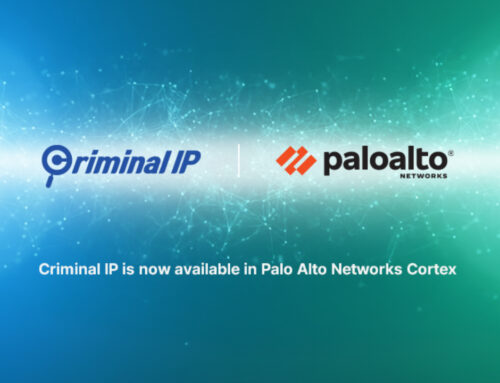
Critical NVIDIA Container Toolkit Flaw Allows Privilege Escalation on AI Cloud Services
In the rapidly expanding landscape of AI cloud services, the integrity and security of underlying infrastructure are paramount. A recent disclosure by cybersecurity researchers has sent ripples through the industry, revealing a critical container escape vulnerability within the NVIDIA Container Toolkit. This flaw, dubbed NVIDIAScape by Google-owned cloud security firm Wiz, poses a severe threat, potentially allowing privilege escalation and unauthorized access within managed AI cloud environments. For organizations leveraging high-performance computing and AI/ML workloads, understanding and mitigating this vulnerability is not just recommended, but essential.
Understanding the NVIDIAScape Vulnerability
The vulnerability, officially tracked as CVE-2025-23266, is a critical container escape flaw. It carries a severe CVSS score of 9.0 out of 10.0, highlighting its significant impact and ease of exploitation. At its core, a container escape vulnerability allows an attacker to break out of the confines of a seemingly isolated container and gain access to the host system. In the context of the NVIDIA Container Toolkit, which is instrumental in running GPU-accelerated workloads in containers, this means an attacker could move from a compromised containerized AI application to the underlying cloud infrastructure.
The NVIDIA Container Toolkit facilitates direct access to host GPUs for containers. While this design is crucial for performance, it introduces potential security surface areas. The NVIDIAScape flaw exploits a weakness in how the toolkit handles certain operations or permissions, enabling a malicious entity to leverage this bridge between the container and the host for privilege escalation. Such an escape could lead to:
- Unauthorized access to sensitive data on the host.
- Lateral movement within the cloud provider’s network.
- Disruption of other cloud services or tenant environments.
- Deployment of malicious software or backdoors.
Impact on AI Cloud Services and HPC
Managed AI cloud services often rely heavily on containerized environments to deliver scalable and efficient computational resources. Frameworks like TensorFlow, PyTorch, and Keras, when accelerated by GPUs, leverage the NVIDIA Container Toolkit. This makes the vulnerability particularly concerning for:
- Cloud Service Providers: They must ensure the isolation and security of their multi-tenant environments. A container escape threatens the fundamental security model of cloud computing.
- Organizations running AI/ML Workloads: Companies training large language models, processing vast datasets, or deploying AI inference services in the cloud could face significant data breaches or operational disruptions if their containers are compromised.
- High-Performance Computing (HPC) Clusters: Many HPC environments utilize containers for scientific simulations and data analysis, making them equally susceptible if the NVIDIA Container Toolkit is employed.
The ability to escape a container and escalate privileges on the host grants an attacker a powerful foothold. This could lead to deep compromise of the cloud infrastructure, potentially affecting numerous tenants and critical operations.
Remediation Actions for CVE-2025-23266
Given the severity of CVE-2025-23266, immediate remediation is crucial. Users and providers of AI cloud services must prioritize patching and implementing robust security measures.
- Update NVIDIA Container Toolkit: The most critical step is to update the NVIDIA Container Toolkit to the latest patched version. NVIDIA has likely released security updates addressing this specific vulnerability. Always refer to the official NVIDIA documentation and security advisories for the most accurate and up-to-date patching instructions.
- Implement Least Privilege: Ensure that containers and their runtimes operate with the absolute minimum necessary privileges. Review Docker and container orchestration configurations to limit capabilities and mount points.
- Regular Security Audits: Conduct frequent security audits of container images, configurations, and host environments. Use container security scanning tools to identify known vulnerabilities in dependencies and base images.
- Network Segmentation: Isolate AI/ML workloads and their underlying infrastructure using strict network segmentation. Limit inbound and outbound connections to only what is strictly necessary.
- Runtime Monitoring: Deploy robust runtime security monitoring solutions that can detect anomalous behavior within containers and on the host, such as unexpected process spawning or file system access attempts.
- Patch Management: Maintain a rigorous patch management process for operating systems, container runtimes (e.g., Docker, containerd), and all installed software on hosts.
- Incident Response Plan: Have a well-rehearsed incident response plan specifically for container compromises and cloud security incidents.
Recommended Tools for Detection and Mitigation
Leveraging specialized tools can significantly aid in the detection, analysis, and mitigation of container vulnerabilities like NVIDIAScape.
| Tool Name | Purpose | Link |
|---|---|---|
| Trivy | Open-source vulnerability scanner for container images, file systems, and Git repositories. | https://aquasec.com/products/trivy/ |
| Falco | Cloud-native runtime security, detects anomalous activity in containers and hosts. | https://falco.org/ |
| Clair | Open-source static analysis tool for vulnerabilities in application containers. | https://github.com/quay/clair |
| Grype | CLI tool for scanning container images and file systems for known vulnerabilities. | https://github.com/anchore/grype |
| Aqua Security Platform | Comprehensive container and cloud-native security platform (commercial). | https://aquasec.com/ |
| Wiz Cloud Security Platform | Cloud security posture management and attack surface analysis (commercial). | https://www.wiz.io/ |
Conclusion
The disclosure of CVE-2025-23266, codenamed NVIDIAScape, underscores the ongoing challenge of securing complex cloud-native environments, particularly those leveraging specialized hardware acceleration like GPUs. For anyone operating or providing AI cloud services, addressing this critical NVIDIA Container Toolkit flaw is imperative. Proactive patching, rigorous security practices, and continuous monitoring are the cornerstones of defense against such high-impact vulnerabilities, ensuring the integrity and confidentiality of AI workloads and the underlying cloud infrastructure.





